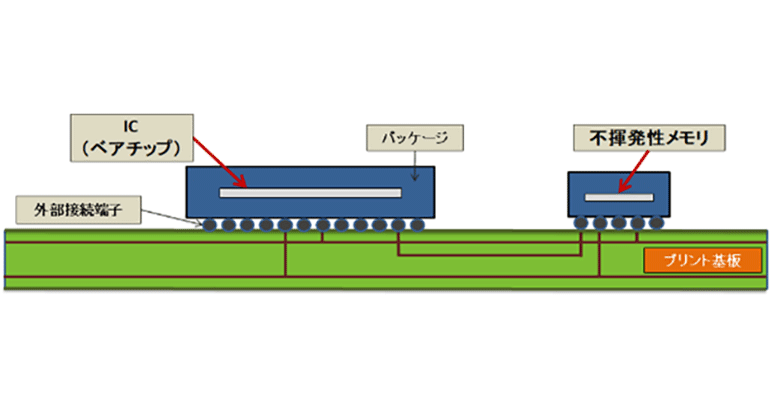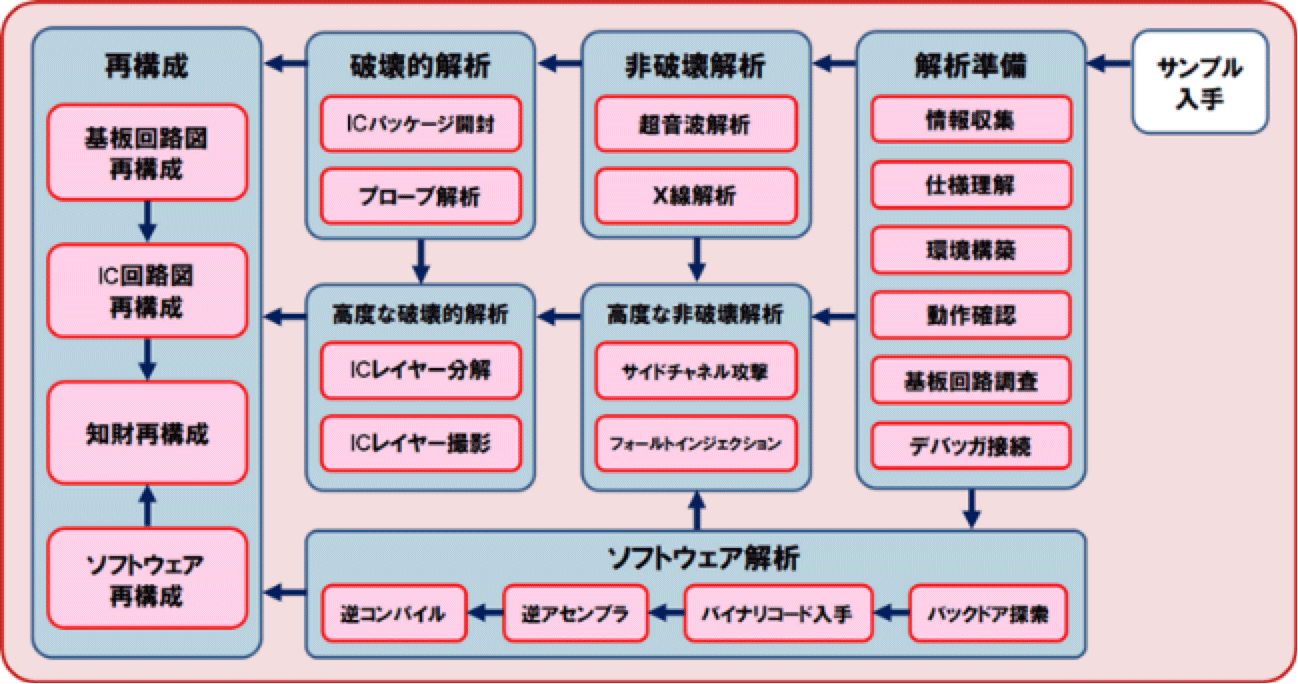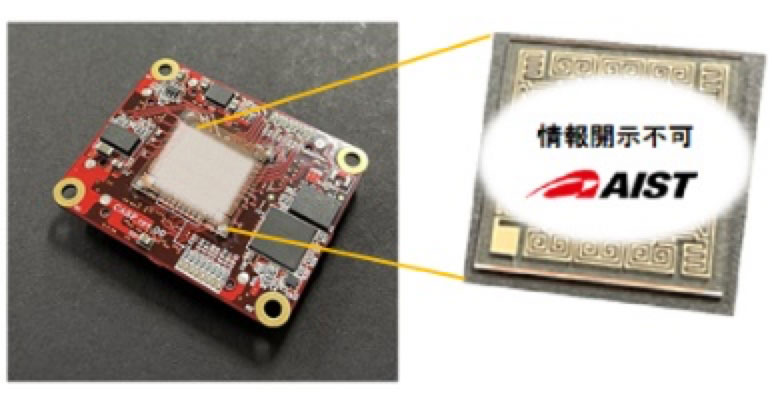Electronic device protection
Electronic appliances around us are composed of various smaller electronic devices. Sensors and communication modules are called edge devices and play an important role in supporting society.
Many electronic devices are integrated circuits configured on silicon wafers and packaged in resin (Figure 5), and then connected on the board via external terminals.
Some devices like processors and memory chips often contain sensitive information, such as algorithms or cryptographic keys. When a device is reverse engineered, there is a risk that the product will be imitated and modified based on the confidential information stored inside (Figure 6).
The problem of counterfeit and unauthorized modification eradicating the original and sweeping the market cannot be overlooked. There is also a risk that inexpensively duplicated and modified products may cause damage to users and the environment.
In this research, we have developed a security device SS-AID by combining retrofit processing, board design, circuit design, and environmental resistance evaluation technologies.
Our method does not require high capital investment or advanced processing technology. The designated use of SS-AID is as a retrofit processing. It is mounted on a board, covering as many devices to protect as possible (Figure 7). When SS-AID detects physical interference with the protected parts, a security function is activated to prevent information leakage. This research combines hardware security and small-data fine-grained analysis technologies. We are aiming for cost-conscious countermeasure for reverse engineering. We are also developing a framework for the stable provision of the technology.
本This research is currently being conducted with the support of the New Energy and Industrial Technology Development Organization (NEDO).




